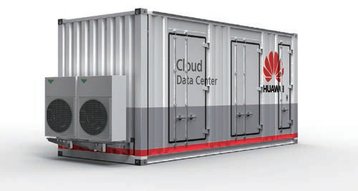Sales of prefabricated modular datacenter products (PFM) are growing rapidly as the time to production shrinks and cash flow improves. But a new report warns their potential is being wasted as the technology remains undersold and under rated.
The PFM is spreading across geographies and genres, as the new building process is adopted in an increasing number of countries, vertical markets and sizes of data center, says a new report Global Prefabricated Modular Datacenter Forecast 2013-2018, from market watcher 451 Research.
The potential for PFM, according to 451 analyst Daniel Bizo, is large in both global distribution and scale, but PFM’s sales performance is still patchy against overall data center building activity.
Raising awareness
As vendors grow in number they’re raising awareness of the products. “The PFM datacenter market is probably the fastest growing segment of the datacenter building industry,” said Bizo. But he warned that suppliers must communicate the benefits of PFM with clarity before they can build their sales channels.
Despite the rapid growth in vendor revenues and projections, the 451 report has moderated the more optimistic outlook it published in early 2013. This downward adjustment is not a reflection of the market potential for PRM but its failure to capture the imagination of cautious data center investors, according to Bizo.
The analyst forecast global revenues of $4bn by 2018 for PFM products, which represents a five-year CAGR of 30.1%. The data is based on the feedback of 50 suppliers.
“PFM technology is generally a superior deliverer of data center capacity compared to traditional brick-and-mortar facilities,” said Bizo. If datacenter owners are not even considering modular components for expansion and new builds, they risk significant disadvantages, Bizo warned.
PFM vendors, on the other hand, have failed to articulate the potential of PFM methodology and make it clear that operators should outsource their construction rather attempt to build themselves. The PFM industry has an image problem, he warned. Pre-built data center units are perceived as solutions for remote microsites, temporary capacity or quick builds for disaster recovery sites.
That was probably true in the past, but PFM can now cope with all eventualities, Bizo argued. “Whether it’s medium or large enterprise, or a multi-tenant operator, a few racks or multiple megawatts, there are relevant PFM datacenter designs already on the market,” said Bizo, “modularity doesn’t necessitate small enclosed individual modules. Designers are free to create structures of virtually any size.”
The years 2015 and 2016 will be critical for vendors trying to establish themselves as early leaders, Bizo concluded.

